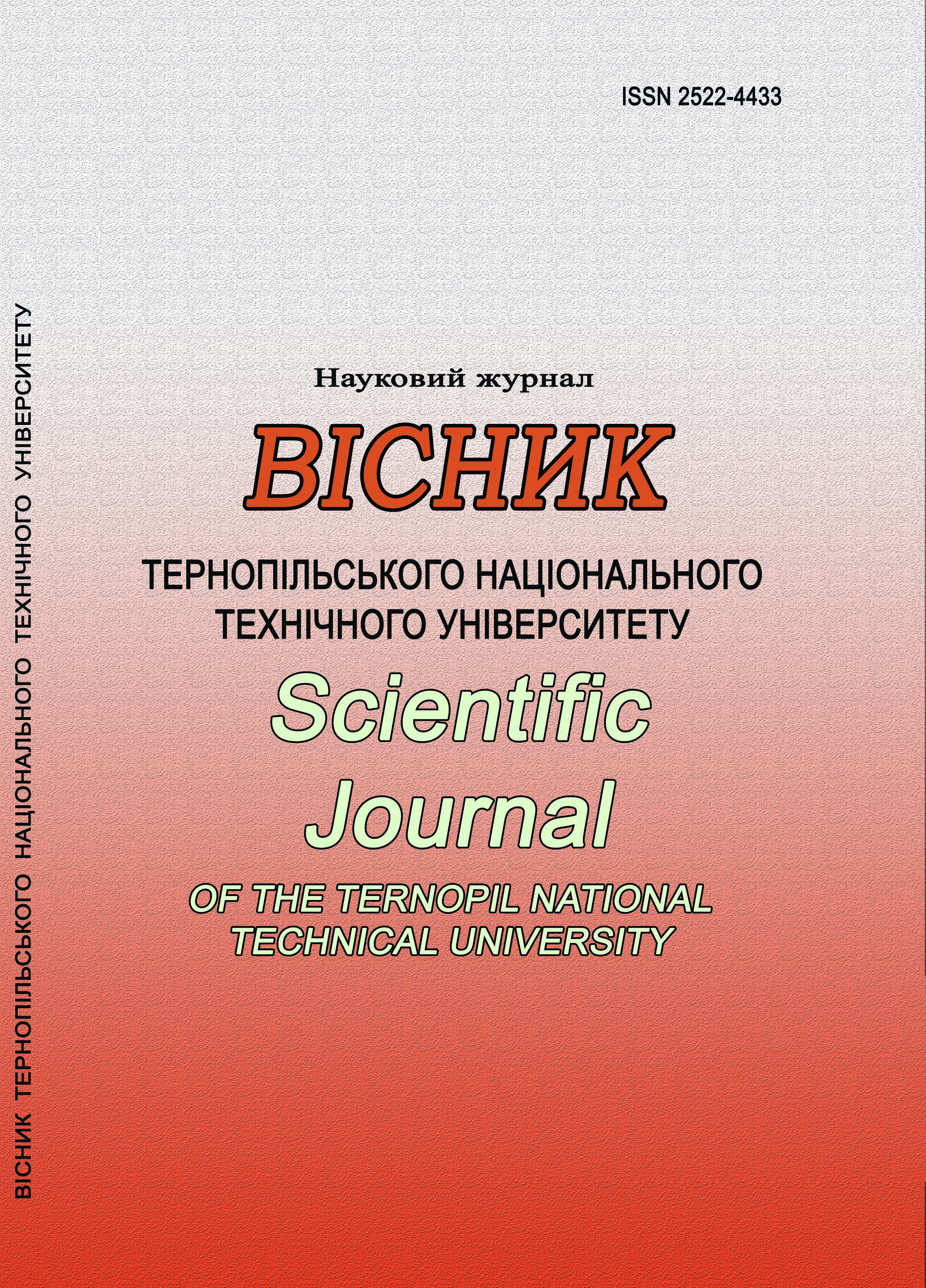Presentation of solutions of three-dimensional dynamic problems of the theory of elasticity in a curvilinear orthogonal coordinate system
Main Article Content
Abstract
To describe the processes of distribution of elastic waves, a model of a three -dimensional isotropic body is used under the action of dynamic loads. A well known presentation of the general solution of equations had been considered in a vector form, which contains four functions. It is established that the function that describes the expansion waves is uniquely determined by the volume deformation. It is shown that the dynamic tense-deformed state of the body with zero volumetric extension can be expressed through two independent functions that satisfy the equation that describes the waves of shift. It is proved that the overall solution of equations can be expressed through three four dimensional displacement functions, which are defined as the solutions of wave equations of the second order. This solution was used and an analytical expression of the general solution of the equations of dynamic theory of elasticity in the curvilinear orthogonal coordinate system was found. This submission has been used and a clear expression of elastic displacements in the cylindrical coordinate system was recorded. However, there are multipliers near one displacement function, which depend on the angular variable, which complicates its practical use. The general solution is regulated in the cylindrical coordinate system in such a way that the coefficients of the expansion in the Fourier rows do not depend on the angle ... . This made it possible to significantly simplify the expression of solution. The components of a stress-deformed state in the cylindrical coordinate system are recorded
Article Details
Issue
Section

This work is licensed under a Creative Commons Attribution 4.0 International License.
References
1. Nowacki W. (1962). Thermoelasticity. London: Pergamon, 628 p.
2. Timoshenko S. P., Goodier J. N. (1970). Theory of elasticity. New York: McGraw-Hill, 574 p.
3. Sadd M. H. (2009). Elasticity: Theory, applications, and numeric. Burlington: Acad. Press, xii+461 p.
4. Bozhydarnyk V. V., Sulym H. T. (1994). Elementy teorii pruzhnosti. Lviv: Svit, 560 r. (In Ukraine).
5. Love A. E. H. (1944). Mathematical Theory of Elasticity, 4th ed. New York: Dover, 644 p.
6. Teodorescu P. (2013).Treatise on Classical Elasticity Theory and Related Problems. Dordrecht, Heidelberg, New York, London: Springer, 802+KhI p. https://doi.org/10.1007/978-94-007-2616-1
7. Lamé G. (1852). Leçons sur la théorie mathématique de l’élasticité des corps solides. Paris: Mallet- Bachelier, 335 p.
8. Somigliana C. (1892) Sulle espressioni analitiche generali dei movimenti oscillatori. Rend. Mat. Acc. Lincei, 5, vol. 1, rr. 111–119.
9. Sternberg E., Eubanks R. A. (1957) On stress functions for elastokinetics and the integration of the repeated wave equation. Quart. Appl. Math, vol. 15, rr. 149–154. https://doi.org/10.1090/qam/91657
10. Grinchenko V. T., Meleshko V. V. (1981). Garmonicheskie kolebaniya i volnyi v uprugih telah. Kiev: Naukova dumka, 284 r.
11. Terumi T. (2024). Theory of Elastic Wave Propagation and its Application to Scattering Problems. Abingdon: CRC Press, Taylor & Fransis Group, 284 p.
12. Khai M. V. (1980) O svedenyy trekhmernykh dynamycheskykh zadach teoryy upruhosty dlia tela s treshchynoi k yntehralnym uravnenyiam. Mat. metody ta fiz.-mekh. Polia, vol. 12, pp. 63–69. (In Ukraine).
13. Revenko V. P. (2009) Solving the three-dimensional equations of the linear theory of elasticity. Int. Appl. Mech, vol. 45, pp. 730–741. https://doi.org/10.1007/s10778-009-0225-4
14. Korn G. A., Korn T. M. (2000). Mathematical handbook for scientists and engineers: Definitions, theorems, and formulas for reference and review. New York: Dover Publications, 1151 p.
15. Watson T. G. (1980). A treatise on the theory of Bessel functions. Cambridge: Cambridge University Press, viii + 804 p.

